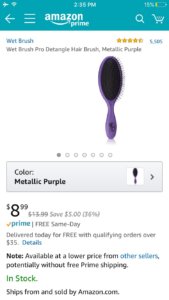As a marketer, you’ve likely come across the buzz-word “omni-channel” in the context of online marketing. There are countless sources that try to explain to marketers exactly what omni-channel is, but often, these explanations are abstract and lack concrete examples. This leaves marketers feeling confused and unfulfilled, which is problematic because omni-channel is used everywhere in the eCommerce world. It is imperative for marketers to understand what an omni-channel experience would feel like to a consumer, when implemented correctly.
Omni-channel can be defined broadly as cross-channeling through a consistent user experience. You may ask, what does this even mean? Well let me tell you, conceptually, that omni-channel is quite simple! Let’s start by breaking down the basics.
What are Channels?
The most essential part of omni-channel is understanding how channels are relative. Channels of communication are the means through which people communicate. In eCommerce retail, aka E-tail, the major channels include electronic (all email, Internet, social media) and mobile (private and individualized messages). A major channel that e-tailer’s lack is face-to-face, or personal communication, which they must make up for using personalization techniques, in order to ensure a connection with the customer. Organizations must employ various tactics to instill a level of personalization so they can effectively converse with consumers through an ongoing conversation. This is where Personalics is here to help.
When different communication channels overlap, this is called cross-channeling. The blending of channels creates a dynamic center of communication, which simulates the high level of personalization and service like a customer would experience in-person. Omni-channel is combining these channels to most effectively create a continuous and seamless consumer experience online.
Why Omni-Channel?
The omni-channel experience is most relevant to our current market because it dynamically interplays channels and brands, in order to maximize navigation and efficiency for users. This creates a seamless and consistent experience across all channels of the brand. A surface level example from Harvard University for a bricks-and-clicks business, is when a mobile app matches the reflective design of the website, which thematically echoes the look and feel inside the store.
Combining multiple platforms, the omni-channel experience blends both digital and physical worlds, allowing retailers to interact with customers whether online on a computer, in local stores and kiosks, through mobile devices, TV’s and beyond.
Here’s one example that really demonstrates a fluid, dynamic, and holistic omni-channel experience:
- I go online, login with my customer ID, and browse some pants.
- I find a pair that I like, but I don’t want to order them online because of the shipping cost and hassle.
- I want to try them on in the retail store to ensure proper fit.
- While walking in the mall, near the store, I receive a predictive push notification on my phone (because I opted in for the retailer’s app to use my location) from the brand. They are offering me an extra 10% incentive for those pants and telling me that my size exists in the store nearby.
- When I arrive at the store, a digital screen greets me. After typing in my ID, the screen directs me toward the exact in-store location of the pants.
- I apply the coupon at check-out, and the cashier addresses me by name as he thanks me for shopping with the brand.
In the above example, it can be noted that the omni-channel experience goes beyond merging media platforms and blending consistent aesthetics across channels. The omni-channel strategy integrates data from multiple sources to track the customer’s decision process throughout all channels and touch points. It predicts the next best message, which will yield the highest engagement. This is predictive, continuous, and consistent omni-channel that converses with the consumer.
Even for an E-tailer, Omni-Channel Extends Beyond the Boundaries of Media Channels
You may be thinking an online retailer lacks an important channel of communication: a physical, in-store relationship. However, e-tailers can still ensure personable communication without ever meeting in person. Deloitte Point of View even claims it’s easier for e-tailers to develop physical presence than it is for bricks-and-mortars to increase their digital presence.
A successful brand will employ this by synergizing their existing channels and all potential stakeholders. Each department (i.e: executives, IT, marketing, customer service) works closely together to create a productive and seamless experience. Personalics embraces this strategy in the following example:
- A shopper clicks to open and read their personalized email, shopper calls Customer Service to ask a question, the personalized data is presented to rep, who can quickly recommend the best matching product and close the sale all during the same conversation.
The only way to achieve this efficient transaction is by implementing omni-channel strategies. It’s more effective for representatives to engage dynamically with customers if the brand’s touch-points are connected and customer data is logged. No matter the channel, consumers expect the same service levels and same access to information throughout their entire shopping journey.
Not only do customers appreciate fluidity and convenience of a consistent user experience, they are more likely to purchase from you if the process is easy and accessible across platforms. With so many competing retailers and e-tailers in the contemporary market, consumers won’t settle for anything less than a seamless experience.
What’s the Catch for E-tailers?
In order to hook new customers and retain interest without ever personally connecting face to face, e-tailers must create highly effective personalized offerings and appeal to sensual design aesthetics. Amazon does this incredibly well. Their website exhibits a savvy and user-friendly display that grabs attention and is consistent across all channels. Customers are more likely to purchase from you if navigating the site is easy, accessible, and convenient. In addition to the consistent user experience, Amazon offers certain perks depending on which channel you use. For example, on mobile, they offer quick purchasing options through “buy now with 1-click” so while you’re on the go, you don’t have to navigate through multiple pages because the customer’s information is already stored.


A Deloitte study states that 45% of smartphone owners are making purchases using a mobile device…every month!
It takes time to develop omni-channel infrastructure
Implementing omni-channel is a goal that brands must commit toward. They must develop a plan to discover and analyze existing departments and furthermore decide to enhance or generate new ones. This journey helps a brand understand different sections of their organization and how to best appeal to their desired audience.
To become a legitimate competitor in the ever-changing market, and appeal directly to consumers, a brand should consider reviewing operations from these two perspectives. Let’s review:
Increase marketing effectiveness
- Understand your audience and provide them with the most relevant content upfront—don’t make them dig for it.
- Easy to navigate and appealing interface that is recognizable and consistent across each platform.
- Implement CRM—ensure personalized marketing doesn’t “chase” customers who have already bought or opted out.
- Direct lines to Customer Service, if need be.
Convenient and safe pay options
- Integrate multiple payment solutions for convenience, which will increase conversion rates
- Diverse shipping and delivery options
- Stay up to date with new technologies to ensure customer’s trust in storing their important information online
These two perspectives cover the entire customer journey, from the moment they click your website to closing a purchase. Understanding the effectiveness of omni-channel and integrating it into your online brand will create a worthwhile experience for users, which will increase revenue.
Any questions or comments about omni-channel? Personalics would love to hear from you!

